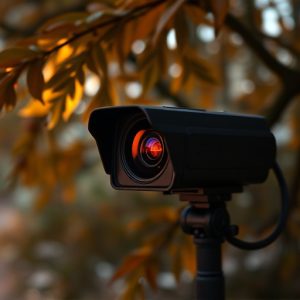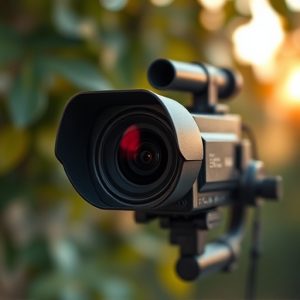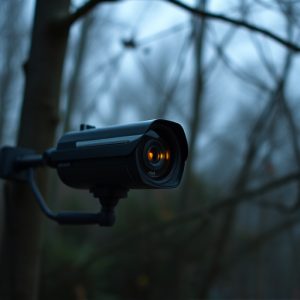Undetectable Cameras: Spotting Secrets with Advanced Identification Techniques
Undetectable wireless security cameras provide discreet, high-quality surveillance through advanced…….
Undetectable wireless security cameras provide discreet, high-quality surveillance through advanced technology like infrared lighting and wireless connectivity. Strategically placed in hidden areas like corners behind furniture or inside cabinets, they offer real-time monitoring for homes and businesses without compromising aesthetics. Their minimal visual impact, remote control capabilities, and advanced sensor technologies make them effective deterrents and valuable tools for security professionals and personal users alike. While privacy concerns exist in the digital age, countermeasures such as EMF detection and thermal imaging help ensure comprehensive scanning without disrupting operations.
“Uncover the art of identifying covert recording devices with our comprehensive guide. In an era where privacy is paramount, understanding undetectable wireless security cameras becomes essential. This article delves into the fundamentals of these sophisticated yet insidious tools, exploring their operation and strategies for discreet placement.
From legal implications to advanced detection methods, we navigate the intricate world of hidden cameras. Learn how to recognize potential spots, ensuring a safer digital environment while respecting privacy laws.”
- Understanding Covert Recording: The Basics of Undetectable Devices
- Wireless Security Camera Technology: How They Operate Unseen
- Identifying Potential Spots: Strategies for Discreet Placement
- Legal and Ethical Considerations: Navigating Privacy Laws
- Advanced Detection Methods: Tools and Techniques to Spot Hidden Cameras
Understanding Covert Recording: The Basics of Undetectable Devices
Covert recording involves the use of hidden or undetectable devices to capture audio and/or visual data. These devices are designed to operate discreetly, making them ideal for situations where privacy and secrecy are paramount. Undetectable wireless security cameras, for instance, integrate advanced technology to minimize their visual footprint while delivering high-quality surveillance. They often employ compact designs, infrared lighting for night vision, and wireless connectivity, allowing them to be placed in virtually any environment without raising suspicion.
Understanding how these devices work is crucial when employing covert recording methods. Undetectable cameras can be battery-powered or equipped with hidden power sources, ensuring they operate silently and persistently. Their small size and remote control capabilities make it easy to position them in hard-to-reach areas, such as corners, ceilings, or behind objects. This technology has become increasingly sophisticated, offering both professional and personal users a powerful tool for monitoring and evidence collection.
Wireless Security Camera Technology: How They Operate Unseen
Wireless security cameras have revolutionized surveillance by offering a discreet and often undetectable method of monitoring areas. These devices operate through a network of connected components, providing real-time video footage and alerts. At their core, they consist of several key parts: sensors, processors, memory, and wireless transmission modules. When triggered, the sensor captures movement or changes in light, converting these signals into digital data that the camera’s processor interprets and analyzes. If conditions meet pre-set criteria, the camera transmits this data wirelessly to a connected device for viewing or storage.
What sets undetectable wireless security cameras apart is their ability to integrate seamlessly with existing environments without drawing attention. They are designed with compact forms factors and advanced concealment techniques that make them nearly impossible to detect. This stealthy nature makes them ideal for applications where discretion is paramount, such as in homes, offices, or public spaces where monitoring needs to be conducted without raising awareness of the surveillance system’s presence.
Identifying Potential Spots: Strategies for Discreet Placement
Identifying potential spots for undetectable wireless security cameras involves a blend of strategic observation and understanding of environmental dynamics. Begin by assessing areas where privacy is paramount, such as offices or homes with sensitive information or activities. Look for spaces that offer unobtrusive vantage points, like corners behind furniture or inside cabinets, where the camera can capture clear images without drawing attention to itself. Discreet placement is key; opt for spots that are naturally hidden from direct view yet strategically positioned to cover critical zones.
Consider using advanced techniques like infrared technology or low-light sensors in dark areas to ensure continuous surveillance. Wireless capabilities allow for easy setup and remote monitoring, making it simple to place these undetectable cameras in hard-to-reach or tight spaces. By employing creative positioning strategies and leveraging the right tools, you can establish a robust security network that remains hidden from prying eyes while offering comprehensive coverage.
Legal and Ethical Considerations: Navigating Privacy Laws
Advanced Detection Methods: Tools and Techniques to Spot Hidden Cameras
In today’s digital era, undetectable wireless security cameras have become a prevalent concern for privacy advocates and individuals seeking to protect their personal spaces. Advanced detection methods are essential tools to counter these hidden threats. Professionals rely on specialized equipment and techniques to identify covert recording devices, ensuring no pixel is left unturned in the quest for privacy.
One of the most effective approaches involves utilizing advanced sensors that can detect electromagnetic fields (EMFs) emitted by cameras. These non-invasive methods are designed to be subtle yet powerful, allowing experts to pinpoint hidden cameras without causing any visible or physical disturbance. Additionally, thermal imaging technology plays a crucial role in identifying heat signatures unique to electronic devices, making it an invaluable asset in the quest to uncover undetectable wireless security cameras.
Undetectable wireless security cameras, while offering enhanced surveillance, come with legal and ethical considerations. As this guide has highlighted, understanding the basics of covert recording, familiarizing yourself with advanced detection methods, and adhering to privacy laws are crucial steps in navigating this technology effectively. By employing strategic placement techniques and staying informed about evolving detection tools, you can ensure the responsible use of undetectable cameras while maintaining a safe and secure environment.


